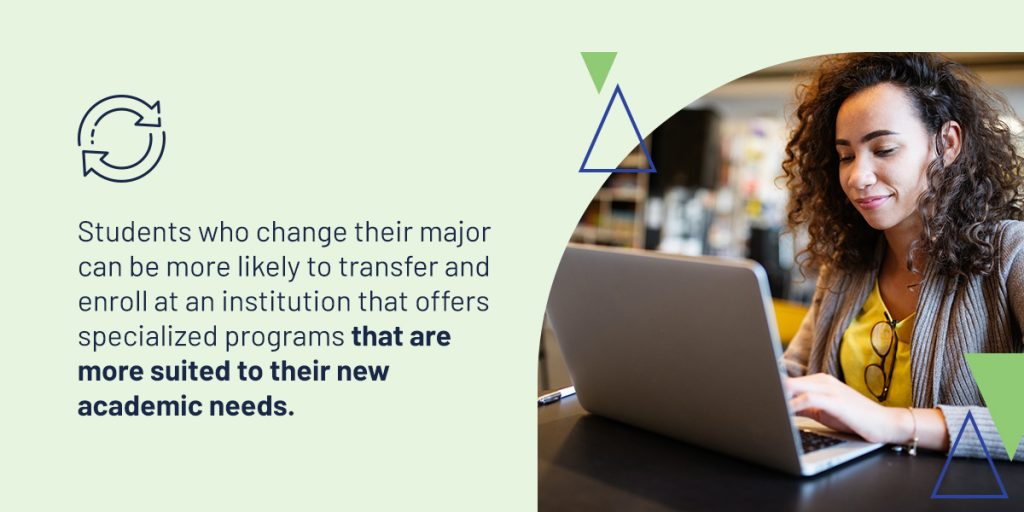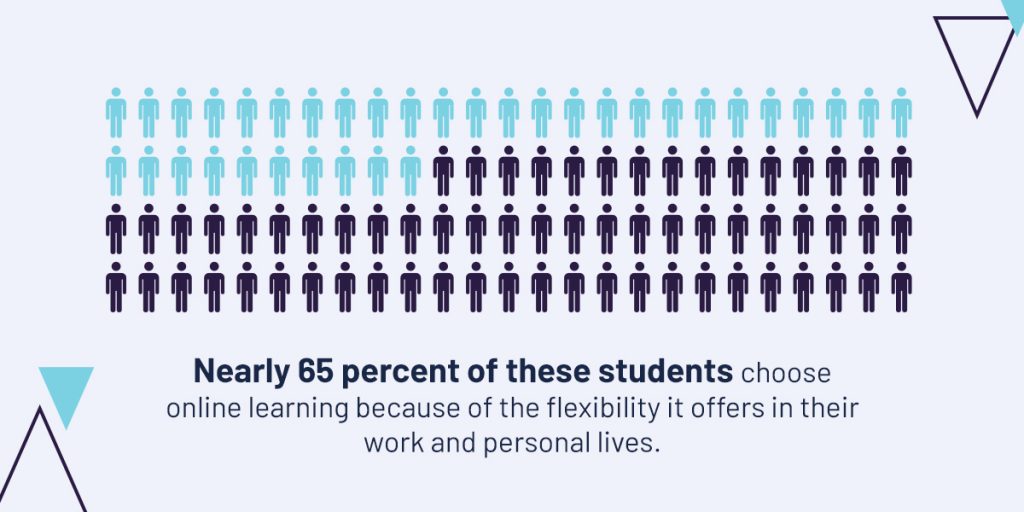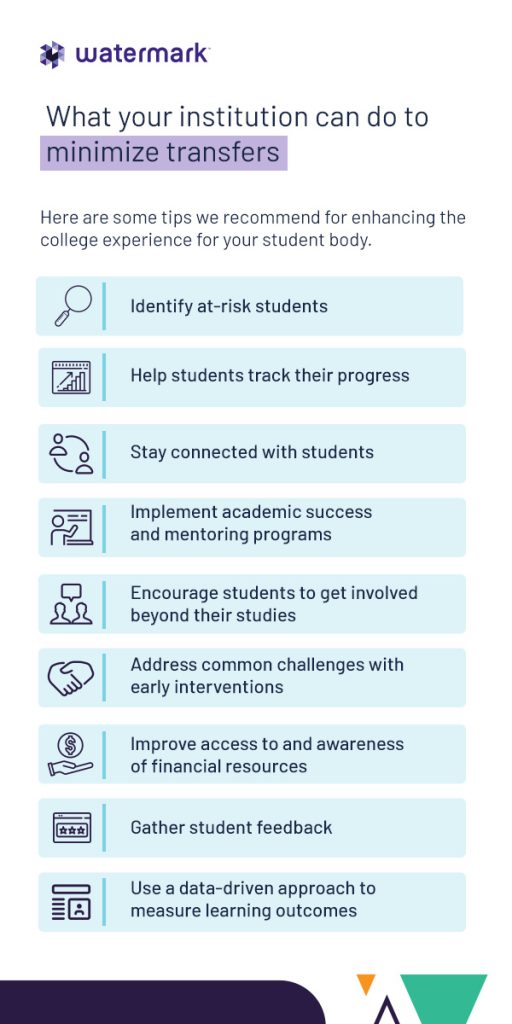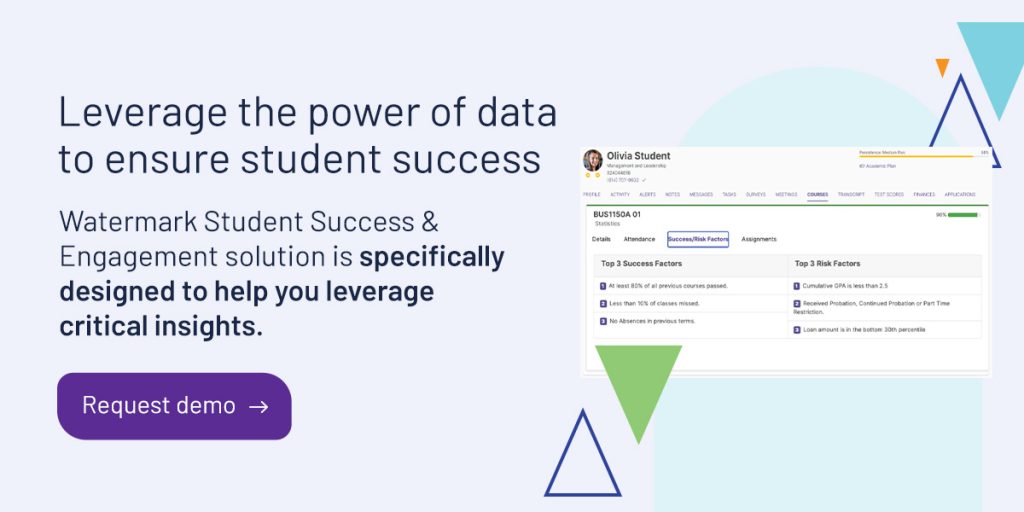




Transferring schools has become much more popular in the last decade. According to a recent report, over a million students transferred from one higher education institution to another. However, only a small percentage of these transfers graduate. Research shows that fewer than half of all community college transfers earn their bachelor’s degree within six years.
The data reports that degree completion rates are even lower for transfers from minority groups. Because transfer outcomes have shown little improvement in many states, higher education institutions must identify the cause of high transfer rates and implement strategies for improving retention. Using the right tools, your administration can collect student data and evaluate your efforts to improve student outcomes.
At times, the transfer process is expected. In other cases, a large number of students moving from your institution to a new school can be surprising. Below are the most common reasons why students transfer to other schools.
It’s not uncommon for many college students to start out at a two-year institution and plan to transfer to a four-year institution. This decision is often based on financial, circumstantial, or academic reasons. For example, a student who cannot get into the school of their choice may go to a community college or two-year institution to improve their GPA and transfer to that school later on to graduate with a bachelor’s degree. Others transfer from a four-year university to a two-year institution due to a lack of financial resources or uncertainty about academic pursuits.
A study found that at least 30 percent of undergraduates changed their major at least once within three years of enrollment in a higher education institution. Students can change their major for a number of reasons:

Students who change their major can be more likely to transfer and enroll at an institution that offers specialized programs that are more suited to their new academic needs.
Research suggests that college students are more likely to experience loneliness due to the challenges that come with adjusting to new situations and building social support. This research highlights the association between loneliness among college students and family wealth, mental distress, academic performance, social interactions, and economic support.
Socialization is a significant part of the college experience for many students. Those who are unhappy in their new setting can feel isolated. Unpleasant social circumstances can make adjusting to campus life much harder, such as having issues with roommates or trouble making friends. These challenges can impact their desire to stay in their current school environment. They may even feel more homesick or compare their college experience to friends at other institutions, causing them to consider transferring or dropping out.
Being disappointed by the college experience can be a major motivating factor behind transferring. Some transfer students who enroll in college, especially those who move away from home, can feel disappointed by their new life compared to what they thought it would be like.
This can be due, in part, to the many misconceptions and stereotypes about college life based on movies and television. First-generation students can also have a difficult time adjusting because they lack family guidance and support. Others may feel that they’re struggling academically because they’re attending a school with a heavy party culture and do not believe the quality of instruction aligns with their expectations.
While many students love the social and extracurricular aspects of campus life, they may not always feel adequately challenged in their academics. This can motivate them to pursue a different environment where they have more room to grow. Perhaps they’ve even tested out of some courses! Alternatively, students may feel their major, program, or institution in general is unmanageable in terms of the academic workload. Curriculum gaps can directly affect student learning outcomes and satisfaction.
As college costs continue to rise, many students face financial obstacles to pursuing higher education. What’s more, institutions with limited access to financial resources, support, or advising can influence students to transfer to a new school. Transfer students may be more likely to select a new school that offers better aid, scholarships, programs, and career opportunities. Higher education institutions that offer more affordable tuition or in-state tuition rates could see an increase in transfer student rates.
Higher education students who have transitioned from a small high school to a large university can struggle to adjust to life on campus. During the hustle and bustle of orientation, moving into dorm rooms, and meeting with advisors, many students won’t get a full grasp of the campus culture until they’re settled in and starting their classes.
International, out-of-state, and first-generation students can be even more prone to culture shock. In this new environment, they often have to balance language barriers, independence, and separation from their loved ones with their academics. Culture shock can be very overwhelming without the right support, which can lead students to transfer.
We know that changing majors is fairly common for most college students, but what about entire career paths? A change from one science major to another may not completely change the course of their future, but students who decide to pursue a new career can suddenly feel out of place at your institution.
For example, a student who changes their major from architecture to creative writing a year or two into college could consider transferring to another institution that offers a better academic route to the job they want via internships and other opportunities.

Long before the COVID-19 pandemic, about one-third of all college students in the U.S. were enrolled in at least one online course. Nearly 65 percent of these students choose online learning because of the flexibility it offers in their work and personal lives.
Many students who work to fund their education or have families to care for will enroll in a university and realize it’s difficult to balance their personal obligations. At this point, they will transfer to an institution that offers online or remote learning courses so they can earn their degree on their own time.
Prestigious institutions are highly sought after because many people believe they suggest higher academic quality and better career prospects. Some students desire to attend specific institutions due to perceived prestige, recognition, or family legacy. Others wish to transfer to a top-ranked university for the resume-building and networking potential it can offer.
Transferring can be on the minds of students who do not like the location of their institution or lack of proximity to their loved ones. For example, a student who attends a very remote school can suddenly desire to attend an institution in a large, bustling city with more social and professional opportunities. Others may have only been accepted to local or community colleges when their dream is to move abroad once they improve their academic standing.
Some students may also not have been accepted to institutions near their home, leading them to attempt to transfer to one more suitably located. In fact, location is one of the top nonacademic factors that impact a student’s decision for college enrollment.
Students come from different educational, economic, and social backgrounds. No two students have the same higher education experience — they all have unique obstacles and advantages. With more insight into why students are likely to transfer from your institution, your administration can develop retention strategies to ensure student learning success and boost retention. Here are some tips we recommend for enhancing the college experience for your student body.

Struggling students do not always ask for help, even when they know support services are available. By reviewing student data, you can identify students who show warning signs of disengaging. For example, students who have poor attendance, consistent tardies, or are on academic probation may be more likely to transfer than others. Students who do not participate in any extracurricular activities can also indicate a sense of social isolation, which is another top factor behind transferring.
It can be challenging for students to improve their academic performance if they cannot access their own data. Using a centralized platform for student engagement and success, your institution will allow students to easily view their program progress, assigned tasks, institutional resources, and support teams. Student success leaders and instructions can also measure student progress to inform interventions and create tailored plans for students who veer off track.
Reaching out to students before they’ve decided to transfer is paramount. Because student well-being is at the top of your priority list, having a solution that enables you to spot struggling students and communicate with them early on can prevent transfers and dropouts. Disengaged students need faculty, staff, and peers to support them on their journey to graduation.
Keeping an open line of communication through personalized, targeted messages to students can demonstrate your dedication to helping them reach their individual goals. Staying connected with students also enables instructors to learn more about student needs and interests.
You likely offer advising and tutoring services at your institution, but how accessible are they? Do students know where to go to ask for help? Do they feel comfortable reaching out for academic or mental health assistance? To encourage students to stay at your institution and complete their degree, it’s important that you offer plenty of encouragement in different aspects of their life. For example, sending messages about your campus support programs with links for easy appointment scheduling gives students direct access to the help they need, including:
Socialization is a significant part of making students feel included and welcomed at their institution. Your administration can help connect students with events, activities, and student organizations on campus to spark their interest and allow them to meet like-minded peers.
For example, send enthusiastic, personalized messages encouraging students to get involved with an upcoming blood drive, scavenger hunt, or farmers market. Students can strike up conversations and meet new friends simply by showing up to these events, so it’s important that you spread the word and keep them informed of socialization opportunities.
An important part of re-engaging at-risk students is addressing their unmet needs as early as possible. If you’ve noticed a student has suddenly dropped a few of their classes, requires financial aid, and does not participate in extracurricular activities, it’s likely too late to re-engage them. You want to offer support as soon as you identify a struggling student.
For instance, informing students of academic, financial, community, and personal resources is a great first step to showing that you care about their success. Using data collection, measurement, and analysis software, your administration can develop proactive interventions that meet their unique needs. These tools allow your faculty to offer personalized support and help immerse students in their college experience.
Many students require support in finding and applying for financial aid. Administrators and institutional leaders can meet this need by providing financial literacy workshops, advising services, and assistance with filling out financial documents, such as FAFSA applications. Keeping students informed about jobs and raising awareness of scholarship or grant opportunities can also give them the added boost they need.
Low-income and first-generation students may also be at a disadvantage when it comes to financial aid literacy if none of their family members have experience with these forms. Your institution can show its commitment to student success and eliminate some of these financial barriers by simplifying need-based aid.
It’s always best to hear directly from your students about their experiences to create the most effective interventions. Sending out surveys, emails, and polls can help you gauge student satisfaction with academic instruction and overall campus life. Gathering feedback from instructors and faculty can also be useful for identifying patterns in student behavior and areas for improvement. Course evaluations and surveys are a great place to start making changes on an institutional level.
At the end of the day, you want your students to succeed and maintain their well-being. To effectively connect your student success initiatives to your institution’s mission, you need the right tools to understand what you’re doing right and what you can change. For example, software that offers report builders can show you student and institution performance metrics against standards so you can get a full picture of student needs. Solutions that offer predictive analytics or key performance indicators (KPIs) can further inform proactive retention strategies to help boost learning outcomes.
As a leader or administrator in higher education, you strive to guide students to success. However, you can’t change things you don’t see. Retaining students is key to fostering a positive academic environment, but you need the right data to drive long-term results. At Watermark, we support higher education institutions with meaningful data. Watermark Student Success & Engagement solution is specifically designed to help you leverage critical insights to identify and meet student needs.
Predictive analytics can help you prioritize support for struggling students, while our mobile app makes it easy for students to connect to resources. With access to the right data, you can effectively support students from recruitment to graduation. Want to see how Watermark can help you maximize your impact? Request a demo of our solutions today to get started!






























































































































































































































































































































































































